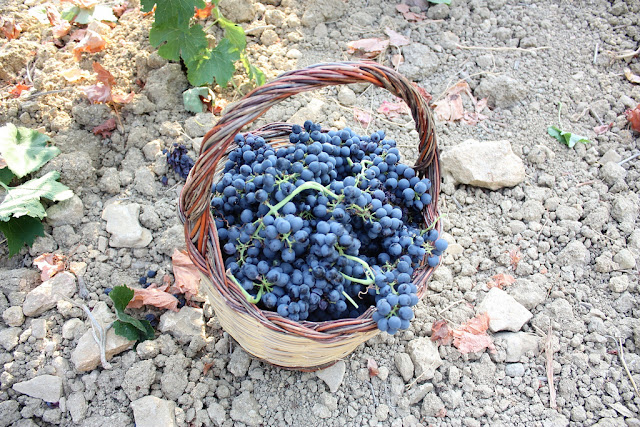 |
| Il magnifico Pontificio Organo Dom Bédos-Roubo Benedetto XVI The magnificent Pontifical Dom Bédos-Roubo Benedict XVI organ Foto: organosandomenicorieti.it |
| Qualche parola sul concerto n° 2 della mia tournée imminente, una raccolta fondi per i terremotati di Amatrice. Il concerto avrà luogo il 17 gennaio 2017 alla Basilica S. Domenico di Rieti, che ospita uno degli organi più grandiosi di tutta l’Italia. Chiamato “Pontificio Organo Dom Bédos-Roubo Benedetto XVI,” questo strumento imponente di cinque (!) tastiere e canne alte 10 metri è stato costruito dal mastro organaro Bartolomeo Formentelli (2004-2009). Formentelli ha basato il suo lavoro su due trattati importanti: “L’art du facteur d’orgues” (“L’arte dell’organaro”) di Dom Bedos (1766-78) e “L’art du menuisier” (“L’arte del falegname”) di Roubo le Fils (1769). Il concerto è sponsorizzato dall’Associazione Culturale "G. O. Pitoni" (Giuliano Aguzzi, presidente). Il concerto è stato l’idea del signor Renzo Fedri, che ne è stato anche il sostenitore più energico. Il Signor Fedri è il nipote di Dino Fedri (1912-1957), un famoso compositore, pianista e direttore d’orchestra, che fu l’ultimo accompagnatore (e un carissimo amico) del leggendario tenore Beniamino Gigli. Fu Dino Fedri che accompagnò Gigli nel suo Tour d’Addio del 1955 in tutta Europa e nel Nord America (compresi gli ultimi concerti a Carnegie Hall). In tal modo, sono conosciente dell’arte di Dino Fedri dal 1990, quando avevo 19 anni. Per mesi, Renzo pazientemente navigava gli uffici e i comitati per stabilire il concerto . Infine, il 13 ottobre, ha ottenuto l’ok dal Rettore della Basilica, Don Luigi Bardotti. Tre giorni dopo, il 16 ottobre, don Luigi è morto improvvisamente per un attacco di cuore! Non c’è modo di descrivere l’incredulità a questa notizia, sia di coloro che hanno conosciuto e amato don Luigi, che persone come me, che non avranno mai il piacere d’incontrare quest’uomo eccezionale. Sono grato all’organista Ing. Filippo Tigli e il comitato Dom Bedos Roubo Benedetto XVI, che vanno avanti e continuano le buone opera di don Luigi. In memoria di don Luigi io comporrò un brano d’organo basato su “Ave Maris Stella”(uno degli inni preferiti da don Luigi), che eseguirò in prima mondiale a questo concerto. Un ultimo pezzo di importanza personale: io nacqui alle 7.11 del mattino del 17-I-71. Questo concerto avrà luogo il 17-I-17. Per i gentilissimi permessi concessi, ringrazio la Prefettura di Rieti, la Curia Vescovile di Rieti e (postumamente) don Luigi Bardotti. | A few words about Concert No. 2 of my upcoming fundraising tour for the earthquake victims of Amatrice. The concert will take place on January 17, 2017 at St. Dominic's Basilica in Rieti, which houses one of the most stunning organs in all of Italy. Called, “Pontificio Organo Dom Bédos-Roubo Benedetto XVI,” this towering instrument of five (!) keyboards and 32-foot-tall pipes was built by master organbuilder Barthélemy Formentelli (2004-2009). Formentelli based his work on two important treatises: “L’art du facteur d’orgues” (“The art of the organbuilder”) by Dom Bédos (1766-78) and “L’art du menuisier” (“The art of the woodworker”) by Roubo le fils (1769). The concert is being sponsored by the Associazione Culturale “G. O. Pitoni” (Giuliano Aguzzi, president). The concert was the brainchild of Mr. Renzo Fedri, who has also been its most energetic proponent. Mr. Fedri is the nephew of Dino Fedri (1912-1957), a famous composer, pianist, and conductor who was the last accompanist (and close friend) of legendary tenor Beniamino Gigli. It was Dino Fedri who accompanied Gigli on his 1955 farewell tour throughout Europe and North America (including the final Carnegie Hall recitals). Thus, the artistry of Dino Fedri has been known to me since 1990, when I was 19 years old. For months, Renzo patiently navigated the numerous offices and committees to secure the concert date. Finally, on October 13, he got the OK from Basilica rector, Don Luigi Bardotti. Three days later, on October 16, Don Luigi died suddenly of a heart attack! There’s no way to describe the disbelief at this news, be it of those who knew and loved him, or of individuals like myself who will never have the pleasure of meeting this exceptional man. I am grateful to Basilica organist Filippo Tigli and members of the organ committee, who are moving forward and continuing Don Luigi’s great work. In memory of Don Luigi, I will compose an organ work based on “Ave Maris Stella” (one of Don Luigi’s favorite hymns), of which I will play the world premiere at this concert. One last piece of personal significance: I was born at 7:11 a.m. on 1-17-71. This concert will take place on 1-17-17. For their very kind permissions, I thank the Prefecture of Rieti, the Bishop's Curia of Rieti, and (posthumously) don Luigi Bardotti. |
 |
| Don Luigi Bardotti (1941-2016) Foto: Massimo Renzi (frontierarieti.com) |
 |
| Dino Fedri (1912-1957) & Beniamino Gigli (1890-1957) Foto: Archivio Fedri (rietimusica.jimdo.com) |


































